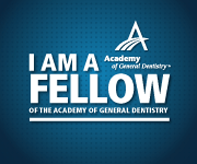Cosmetic Dentistry
Cosmetic Dentistry is a subset of general dentistry that improves the look of the teeth, gums and overall smile. They help people design their smile in ways that grants them confidence. There are a variety of techniques which can fall under the umbrella term of cosmetic dentistry. Here a few of the more common ones:
Teeth Whitening:
Whitening your teeth is a simple way to restore or improve a smile that has undergone staining from normal activity such as drinking tea or coffee. Teeth whitening can also undue the staining that results from smoking. You can whiten your teeth in the dental office or at home. If you are whitening in the dental office, the dentist will use a higher concentration of the whitening chemical than you would use at home. This can provide a dramatic improvement in a short amount of time. However, whitening at home at a steady pace with a weaker concentration can give you just as good of a result even though it takes longer. Some drawbacks to teeth whitening include; short term sensitivity to hot and cold, white spot appearance on your teeth which resolves itself and potential chemical burns of the gums if the whitening gel spreads past the teeth.
It is important to review technique with your dentist for best results if whitening at home.
Veneers:
For people with a desire to change the shape of their teeth veneers are an option. Veneers are thin porcelain covers for teeth that can alter shape or mask imperfections. They are a permanent option and will not fade or change color. Your dentist will evaluate your smile and, with the help of a dental laboratory as well as your input, create a personalized design for you. This design is usually tested with a temporary version of your final veneers and then permanently placed once the patient is satisfied.
Invisalign/Braces:
Sometimes teeth are not aligned and patients want straighter teeth. This could be recommended for esthetics but just as importantly it can be recommended for improved hygiene. Misaligned teeth tend to be difficult to clean compared to teeth that are straight. This can lead to more plaque and tartar buildup as well as increased risk of gum inflammation and even cavities. Clear aligners like Invisalign are great new options for people who are not comfortable with a traditional set of braces, however, they are not always the best option. Your dentist can help you determine whether your specific smile is a good candidate for clear aligners such as Invisalign.
Dental Implants:
Often people are not satisfied with more traditional methods of tooth replacement such as dentures or bridges. In these cases dental implants can be a great option. Dental implants can replace a single missing tooth or even a whole arch of missing teeth and they are a fixed solution which means they stay in the mouth and get cleaned like regular teeth (toothbrush, floss, dental cleanings). Implants get planned and designed with the help of a dental laboratory.



